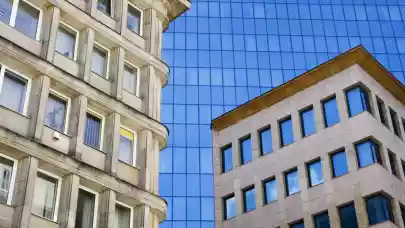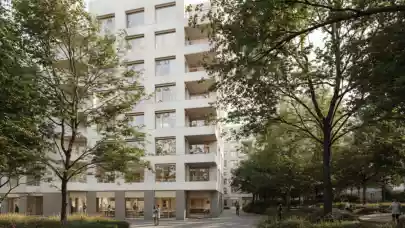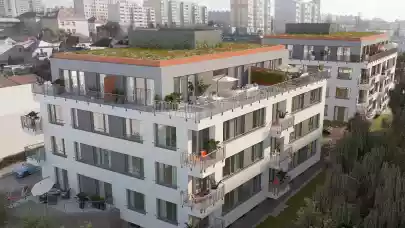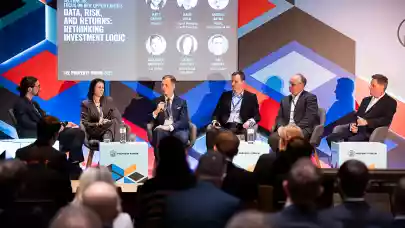
Given the dynamic changes occurring within organizations and the evolving business environment, the old office models are no longer working. At the same time, the market, which has in recent years experienced a strong increase in supply on the one hand, and a significant transformation of the labour market, e.g. evolution of work styles, on the other one, is more and more willing to welcome new workplace strategies.
The "Workplace Strategy – design the workplace experience and get ahead of the future” report drawn up under the guidance of Karolina Dudek, in charge of Workplace Strategy projects at BNP Paribas Real Estate Poland, reveals what a workplace strategy is and what role it actually plays, how to use scientific data when creating such a strategy, what office challenges lie ahead of today’s businesses and what is involved in the process of designing the ideal office.
Karolina Dudek is joining the workplace panel at CEE Property Forum 2018 in Vienna.
What is a workplace strategy?
According to the authors of the report, a workplace strategy encompasses more than just designing an office. It additionally means taking a structured approach to workplace creation based on a thoroughly scientific and methodological analysis of the way a given organization works, what tasks it performs, what business model it uses as the basis for its operations and what are its actual needs. Furthermore, development of a workplace strategy involves finding a number of answers relating to the functioning, manner of communicating and learning, as well as the career paths of individual employees.
2Carefully designed and well thought-out offices should be an investment for a business, as opposed to a cost. Naturally, creating this type of space is a challenging process; however, when approached properly, it will pay off in the end by delivering an office that increases work efficiency, facilitates cooperation between teams, helps improve communication and transfer of knowledge, and frequently serves as a tool for solving business problems. It moreover helps implement business strategies and various projects,” says Małgorzata Fibakiewicz, Head of Office Agency at BNP Paribas Real Estate Poland.
Małgorzata Fibakiewicz adds that offices created based on a workplace strategy often prove to be of value in shaping organizational culture and building a brand image, which in turn undoubtedly attracts the biggest talent to the business.
One of the key conclusions to be drawn from the report is the necessity to create strategies for successful offices and tailor specific solutions to meet the business’s needs with the participation of their future end users.
“Involving work teams in workplace creation should take place on several levels. Space design is more than a plain technical challenge. It additionally requires dealing with specific social processes within the organization. The two dimensions, i.e. technical and organizational on the one hand and social on the other one, are equally important. There is a certain paradox prevailing on the market where employees are expected to be engaged, entrepreneurial and innovative, while at the same time they are excluded from the workplace creation process. The question is: how are people supposed to feel responsible for and relate to their workplace when they have no impact whatsoever on what the place is like,” asks Karolina Dudek, the brain behind and author of the report, Workplace Strategy Manager at BNP Paribas Real Estate Poland

Karolina Dudek
Workplace Strategy Manager
BNP Paribas Real Estate Poland
An office like a good app
The "Workplace Strategy – design the workplace experience and get ahead of the future" report gives an example of an organization that together with Karolina Dudek, Workplace Strategy Manager at BNP Paribas Real Estate Poland, created a strategy for its workplace and designed an office to fit it. Monterail is an organization which, according to the Financial Times and Deloitte, is one of the fastest developing technology companies in Central and Eastern Europe. The office of the software house that has been developing web and mobile apps for 8 years now is based in Wrocław, in a building at ul. Oławska 27-29.
“Designing a clever and efficient office is like designing a good app. Let us approach office design in the same way as we would approach a digital product’s interface, and we will see that both should have the capacity for change, while at the same time remaining cohesive when new operations are introduced. The characteristic feature of our work is dynamic business scalability. When ongoing projects grow and when new ones appear, new teams are created, while it sometimes happens that some people are involved in more than just one project. Thus, it is of strategic importance for us to ensure effective communication and work organization as regards individual teams, as well as to develop and preserve suitable organizational culture,”Szymon Boniecki, Co-Founder of Monterail.
The most remarkable space in the office, tailored to the work style, is an amphitheatre with a designated stage area and monitors suspended beneath the ceiling. It is an open space with a central presence for the weekly meetings held for the entire team. The meetings are used for announcing important company information, sharing the news as to new contracts and reviewing the existing ones. It is also the time for welcoming new team members and making announcements as to the approaching dates for the ZKS Monterail football team matches. Szymon Boniecki stresses that the aim for this particular space is to facilitate openness, which is why the amphitheatre hosts evening programmers' meet-ups. It is additionally used as one of the company’s headhunting tools.
Where do we start...
The key to effective completion of the complex process of workplace strategy creation is to plan it well based on the assumptions and knowledge derived from research. A holistic approach here can bring a number of benefits: it helps understand clearly the way in which the organization operates and define its current situation, as well as plan the design process and involve people in it. It is of particular importance now when the office market offers so many varied options:
“An office in a skyscraper, boutique townhouse or an industrial space? What about the location, neighbours, available facilities and, crucially, price? Answers to the above questions will be impacting on the organization for at least a few years,” adds Małgorzata Fibakiewicz, Head of Office Agency at BNP Paribas Real Estate Poland.



